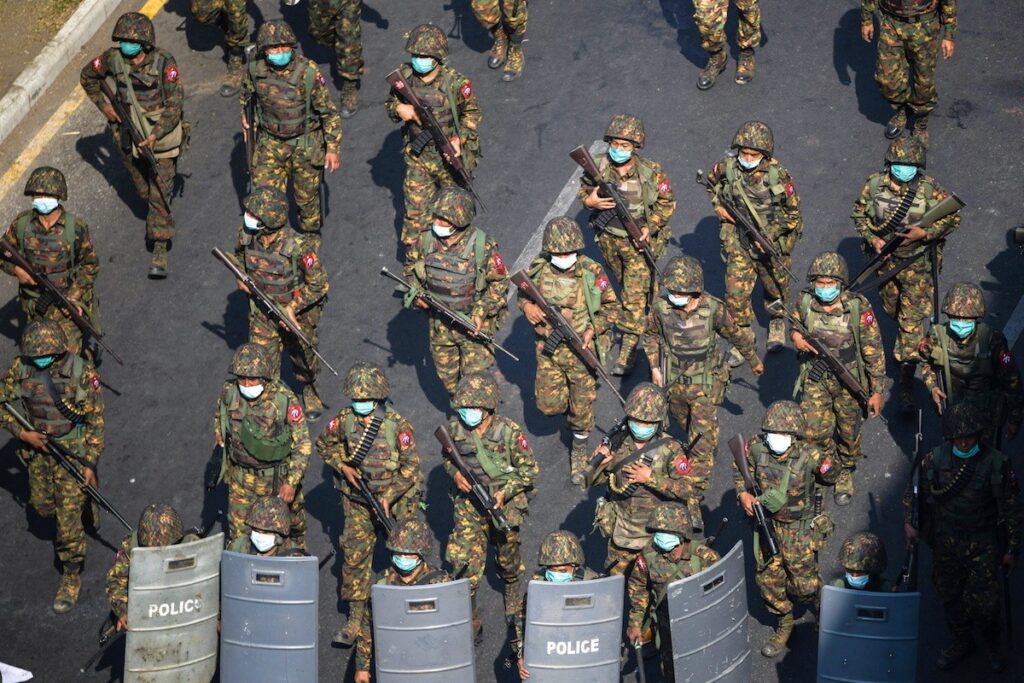Nestled in the hills of Myanmar’s Chin State is a village that has charted a different route to express its opposition to the military regime.
Residents of Salen village in Thantlang Township have firmed up a plan to expand a hydroelectric power project with their own resources to demonstrate that they are not dependent upon the government. This is a mark of their protest against the junta.
The hydel project across the Hnawnkharva River currently generates 50 KW of power. Only 170 houses are supplied with electricity, which is only for three hours in the winter months and the whole day during the monsoon season. Each household pays 200 kyats ($0.095) per month for maintenance of the project, which has been entrusted to two families in the village.
According to Thangding, an elderly resident of the village, “Our objective is to connect as many houses as possible to the supply grid, including the IDP camp in our village.” To generate an additional 50KW, “more barrages would have to be constructed,” he said. More technicians are needed too, which “may not be easy in these troubled times,” he pointed out, adding that “without funds, no plan can be implemented.” Thangding is the brain behind the project.
Thangding said that efforts were being made to raise funds from the expatriate Chin community settled across many countries. “We are hopeful since there are around 500 residents from this village who are now citizens of the U.S. They have always helped us with financial assistance during times of need,” he said.
“We would not like to be dependent upon the government in any way.”
The idea for the hydel project came from a village near Hakha, Chin State’s capital, that had set up a micro hydel scheme with its own resources.
The plan for a hydel project for Salen was conceived in 2002 by Thangding and his associates after a series of meetings lasting for several months. About 300,000 kyats (about $143 at current exchange rates) were generated through voluntary donations from residents in the village and expatriates in the United States.
Subsequently, an engineer from Falam was engaged and assigned the task of implementing the project. He purchased the equipment from Kalemyo where he also observed a production unit. The hydel project was equipped with a new turbine and has been repaired three times since it started generating electricity in 2006.
Availability of electricity is an exception rather than the rule in the areas and townships in Myanmar’s border regions with India. During my travels in Myanmar in January-March this year, I noticed houses and shops connected to the electricity grid only in Kalaymyo city and Namphalong (Tamu) in Sagaing Region, and in Tedim in Chin State. Solar panels for harnessing electricity from the sun are a common sight in houses across both these regions in Myanmar (and also in the Naga inhabited region in north Sagaing Region).
Chin State is among the most scarcely populated and least developed regions in Myanmar. In 2014, it was estimated that around 79 percent of the state’s population lived in rural areas. Before the coup, the government had resolved to install projects for generating electricity in Chin State but few of these were completed.
In 2013, Minister for Electricity Khin Maung Soe announced that Chin State would have access to electricity by the following year. In 2019, the government of Chin State agreed to allow the Beijing-based Power China International Group Ltd to construct five hydel dams at Buanluan and Timit in Hakha Township, Ngahpaipi in Thangtlang Township, Pae Tin Wa in Paletwa Township, and Ruava in Matupi Township. Each dam was projected to generate 30 MW of power. According to media reports, another hydel project of 622 MW at Laymyo is under construction in the region.
According to an estimate, Myanmar has the potential to generate more than 100 GW of hydropower annually, of which only 3 GW has been harnessed so far, which would comprise about two-thirds of the country’s energy requirements. The National Electrification Plan finalized in June 2014 aimed at providing electricity to the entire country by 2030 with a focus on hydropower as a long-term energy solution.
Against the backdrop of the ongoing unrest in Myanmar, residents of Salen village are not optimistic about the government’s plans for hydropower generation.
“The junta does not control more than 30 percent of Chin State. There is no possibility of the projects being completed in such a dire situation,” an elderly resident of Salen, who is engaged in the hydel dam project said. “So, it makes perfect sense for us to help ourselves with whatever resources can be garnered,” he concluded.
Source: The Diplomat


